Key Points of This Article:
1. Data shows that in 2022, the global robot vacuum market size was about $6.5 billion, with China and the United States being the main markets, accounting for approximately 60% of the total market size combined.
2. According to Moojing Oversea, in 2023, of the top 10 brands in robot vacuum sales on the US Amazon platform, 5 are from China. The rise of domestic brands in overseas markets is due to their own advantages and the strategic mistakes of the industry leader, iRobot.
3. The US robot vacuum market has seen significant growth in the high-end product line, with a surge in demand for all-in-one vacuum and mop devices; the Southeast Asian market is emerging with products primarily positioned at low prices.
The heavy work and life pressures of modern people have made "hands-free" assistance a basic need, which has led to the expansion of the robot vacuum market. According to statistics from Euromonitor, from 2011 to 2020, the global robot vacuum market size grew from $1 billion to $4.2 billion, with an annual compound growth rate of 17%. By 2022, according to GfK, Zhongyikang, and NPD data, the market size rose to $6.5 billion, with China and the US markets accounting for approximately 60% of the total (China's share is about 29%).
The United States, as one of the world’s main consumer markets for robot vacuums, has also become an important battleground for Chinese brands going overseas in recent years. What is the current situation of the overseas robot vacuum market? Why are Chinese brands gradually gaining strength in overseas markets? What potential opportunities exist for robot vacuum brands going abroad? This article will provide valuable market insights based on Moojing Oversea e-commerce product data, focusing on Amazon, the largest e-commerce platform in the United States.
Looking back at the history of robot vacuum development, there are several key milestones:
• In 1996, the Swedish home appliance giant Electrolux manufactured the world's first robot vacuum;
• In 2002, iRobot launched Roomba, a mass-produced product with strong cleaning capabilities and an affordable price, which was well-received by the market and established iRobot's leading position in the robot vacuum industry;
• In 2010, the American company Neato released the global-planning robot vacuum XV-11, made with its low-cost laser radar, and using sensors and SLAM (Simultaneous Localization and Mapping) algorithms to cover the entire house without random collisions, marking a milestone change in the industry.
The annual increase in market size for robot vacuums indicates that "freeing up hands" is a universal need around the world. Developed countries in Europe and America, especially the United States, have a stronger demand for robot vacuums. According to statistics from Euromonitor, in 2021, the penetration rate of robot vacuums in the US was 15.5%, far exceeding other countries. Overall, robot vacuums are still in the early stages of development globally, and the future market potential is vast.
According to Moojing Oversea, the American Amazon robot vacuum market reached a market size of $914 million and sales volume exceeded 3.61 million units between August 2022 and September 2023, with an average product price of $252.74. Sales in 2022 followed the platform's promotional rhythm with peak periods in August and November. In the first quarter of 2023, sales increased significantly and peaked in April; October sales reached $77.89 million, a year-on-year increase of 64.5%.
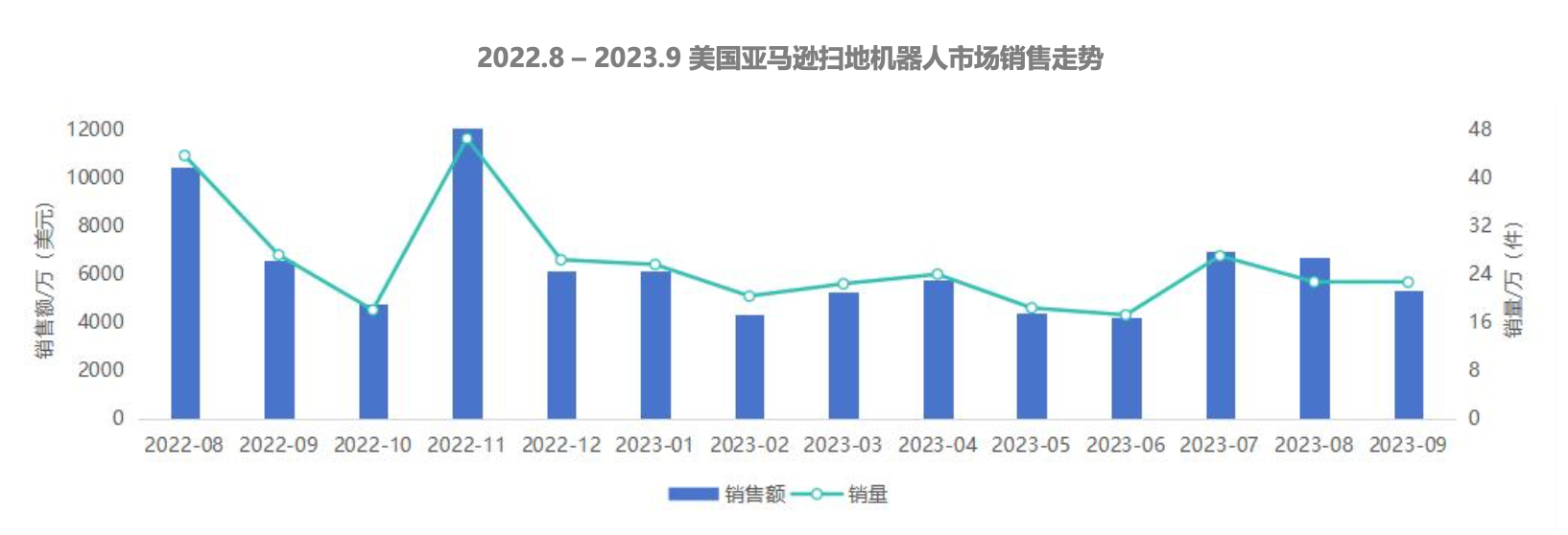
Robot vacuums sold on the US Amazon platform are mainly concentrated below $200, and consumers' purchasing choices are primarily within this price range. Moojing Oversea data shows that in 2023, supply of products in the $119-159 price range remained basically the same as last year, while the corresponding sales volume share increased significantly. Moreover, sales volume share in the price range above $505 also showed a significant increase. The demand and willingness to consume mid-to-high-end products among US consumers are increasing, and both price ranges have a large market capacity and rising potential.
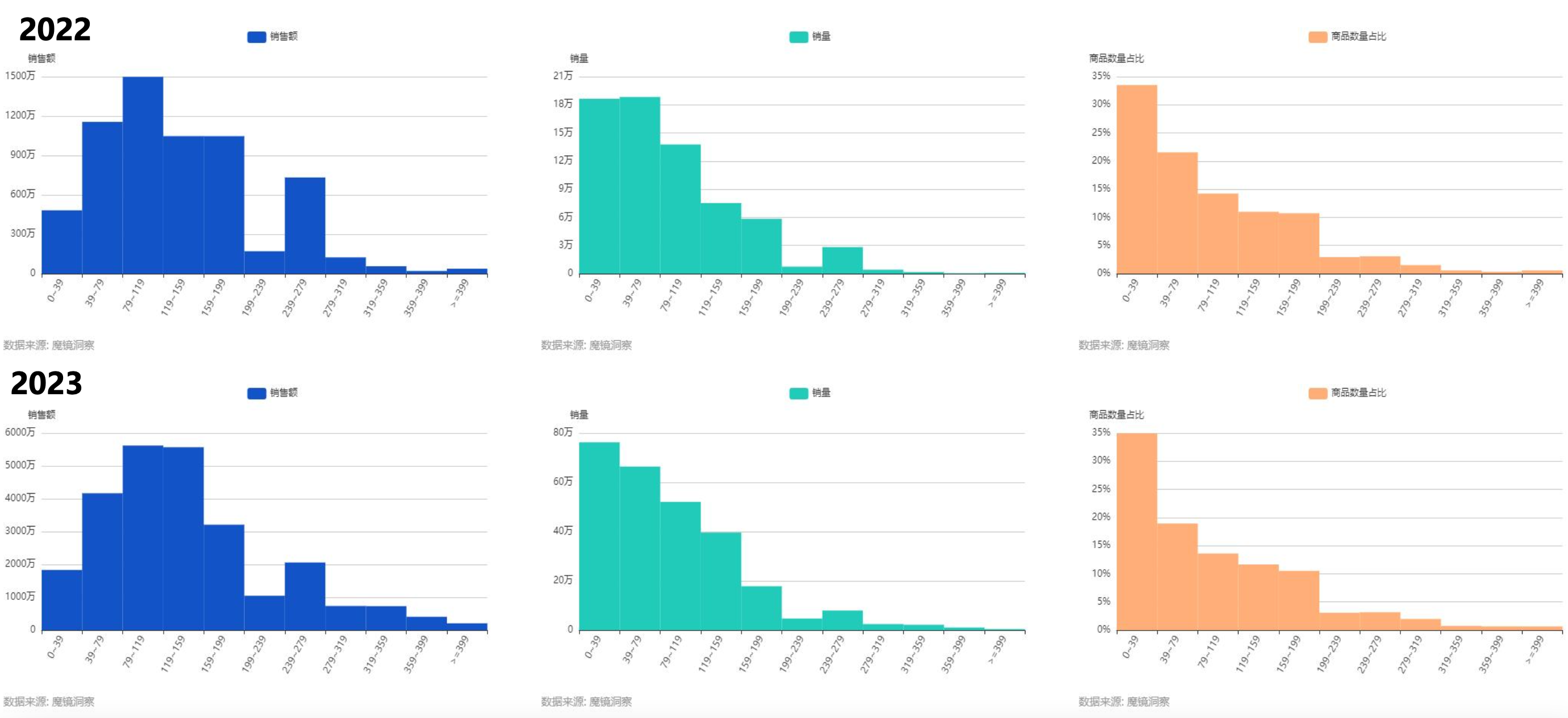

The US robot vacuum market presents a situation with one superpower and multiple strong competitors. Founded in 1990, the old household appliance enterprise iRobot still holds the majority of the market share. However, with the increasing wave of Chinese products going overseas, cost-effective domestic brands like Ecovacs and Roborock are gradually conquering the hearts and minds of global consumers.
The top robot vacuum brands in the United States have a strong influence on the market. According to data from Moojing Oversea, the CR10 concentration from August 2022 to September 2023 was 71.5%, with the concentration slightly increasing in 2023 compared to 2022, highlighting the brand effect. The trend of brand structure changes shows that the months immediately following the end of promotional periods are when the concentration of TOP brands is at its lowest, which presents an opportunity for new brands to make a strong push.
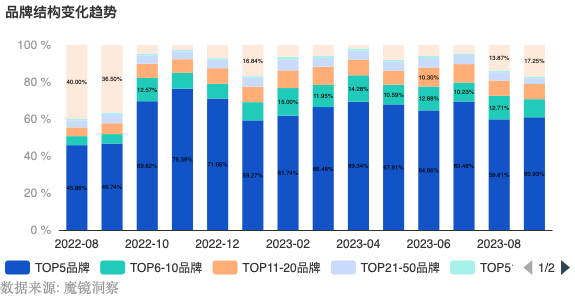
Significantly, in 2023, there were noticeable changes in the TOP 10 brand landscape. As the industry leader, iRobot's market share experienced a downward trend, dropping from 27.5% to 25%, while the performance of Chinese brands going overseas was very impressive. During the statistical period in 2022, only 3 Chinese brands made it into the top ten, but by 2023, half of the sales revenue brands ranking in the top ten were from China, including Roborock (market share 14.3%), Anker's Eufy (market share 6.9%), Ecovacs, and its sub-brand yeedi, Lefant.
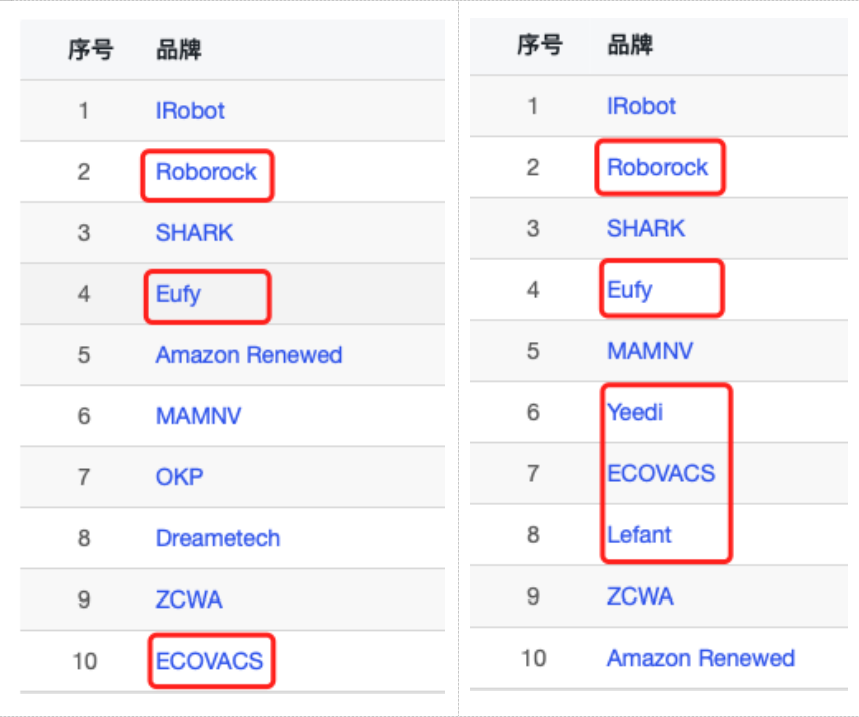
iRobot once held more than 50% of the global market share for many consecutive years. However, with the rise and overseas expansion of Chinese brands, its position as the industry leader has become precarious. According to Euromonitor data, from 2012 to 2021, iRobot's global sales market share has dropped from around 83% to around 30%.
Moreover, the company's financial report data for 2022 also shows that iRobot is facing significant operational pressure, with revenue decreasing year by year since 2020. In 2022, the full year's revenue was $1.183 billion, a 24% decrease from the previous year, forcing the company to implement restructuring, layoffs, and other measures to reduce costs and increase efficiency.
At the same time, Chinese robot vacuum brands have been expanding their overseas market share. Based on estimates, in 2020, Ecovacs and Roborock had global robot vacuum market shares of 17% and 16%, respectively, ranking second and third. Overseas business also provided a significant source of revenue for domestic brands. According to Roborock's 2022 annual report, its overseas income reached 3.48 billion yuan, accounting for 53% of the year's total revenue.
The rise of domestic brands in overseas markets is due to their own advantages and also the strategic mistakes of industry leaders .
In recent years, iRobot has been busy expanding its product matrix and investing heavily in new businesses but neglecting the iteration of its core business. It developed many robots suitable for specific scenarios which did not lead to the company's second growth curve. Instead, due to high costs, the company's revenue is under pressure, and profits continue to narrow. iRobot has also been embroiled in data leakage controversies, adding uncertainty to its future development.
While iRobot was focused on visual navigation, Roborock was the first to introduce a highly cost-effective laser navigation robot vacuum. By increasing suction power and battery capacity while significantly reducing prices to around 1699 yuan, other brands like Ecovacs quickly followed. This shift led by domestic brands in laser navigation significantly impacted iRobot's visual navigation dominated route.
Moreover, iRobot's new product development cycle is long, with its current low-end models being older products from 5 years ago. According to a research report from Open Source Securities, it took iRobot 2 years to develop Roomba s9, which has self-dust collection, to Roomba j7, which also recognizes objects. In contrast, Ecovacs and Roborock only took about half a year to achieve breakthrough innovation from a single self-cleaning product to a full-function base station product. iRobot's product power has fallen behind.


Chinese brands have adopted divergent product strategies during their globalization efforts. According to Moojing Oversea data, on the America-Asia platform, Roborock has focused on the high-end market with products priced over $800, creating a gap from iRobot, which primarily targets the sub-$500 segment. Meanwhile, Eufy and Lefant have set their sights on the sub-$300 mid-low price range, with Ecovacs using its sub-brand yeedi to capture the sub-$500 segment while using its main brand for a full range of pricing strategies.
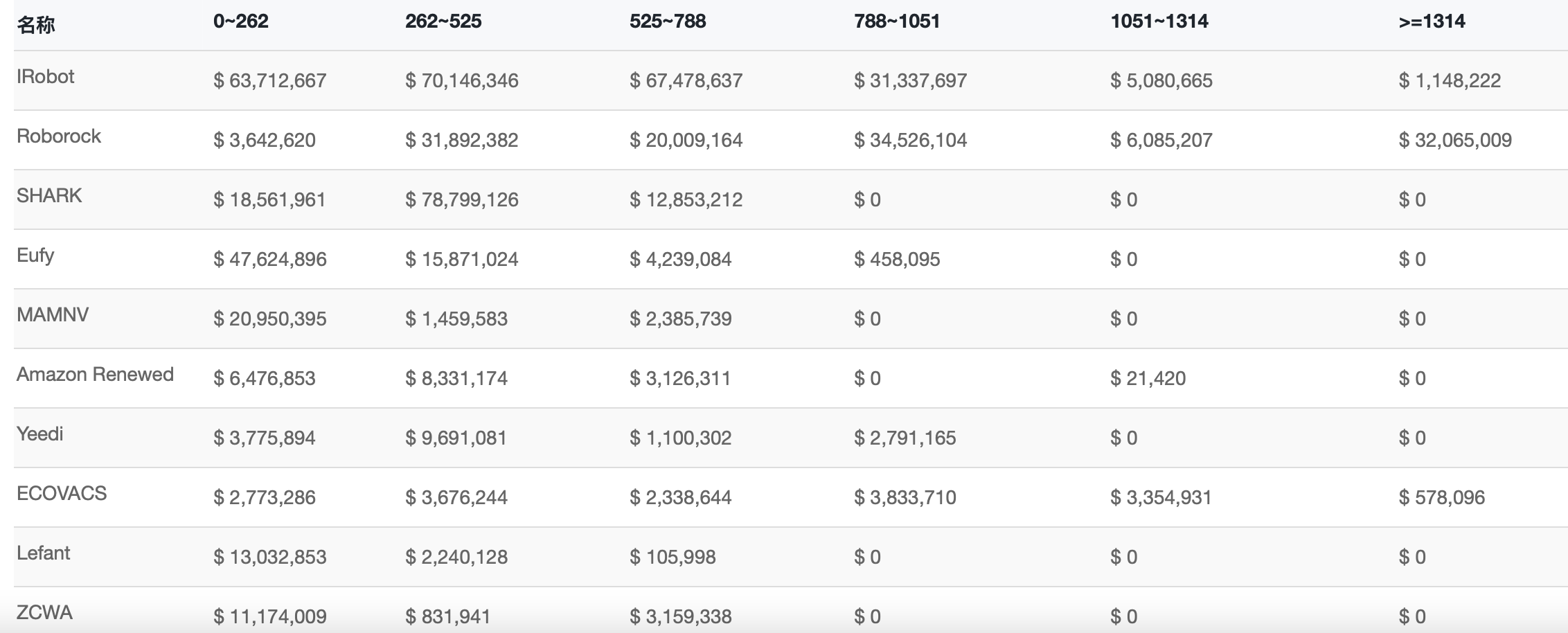
According to sales data by price segment for the period from August 2022 to September 2023, the market below $262 is mainly dominated by iRobot and Eufy, while in the market above $788, Roborock leads with its high-end product line, holding the first place in market share. The America-Asia market for the $262-$788 price range is occupied by iRobot and Shark. Chinese brands can take advantage of their supply chain and cost benefits to secure a foothold in the low-price bands, allowing potential users to experience the products without a high cost and quickly capture the customers' mindshare. Another strategy is to leverage the potential of R&D iteration to perfect the product experience and thus seize the high-end market.
Household cleaning is an essential need, and with the advancement of technology, people have been hoping to free up their hands through technical means, which is the original intent behind the creation of robotic vacuums. However, the earliest robotic vacuums required manual emptying of the dustbin after each cleaning session, which didn't significantly reduce labor. Therefore, robotic vacuums with self-cleaning functions were developed.
Robotic vacuums with self-cleaning functions have a docking station to automatically empty dust after cleaning. The capacity of the dust bag determines the frequency with which users need to dispose of the contents. Furthermore, to further reduce human labor, mopping units with sweeping and mopping functions have become increasingly popular in recent years. According to Moojing Oversea data, from August 2022 to September 2023, sales of robotic vacuums with self-emptying functions amounted to $268 million, a year-over-year increase of 96%, with an average price of $495; sales of sweep-and-mop units amounted to $350 million, a year-over-year increase of 93%, with an average price of $357.

According to sales data from America-Asia's January to September 2023 robotic vacuum sales rankings, the currently well-selling robotic vacuums in the US market can mainly be divided into three categories:
•The first category includes robots that only have a single sweeping function, priced around $180, mainly relying on low price to win sales, with hot products like iRobot Roomba 694 and Eufy by Anker BoostIQ RoboVac 11S (Slim). Among them, Eufy's products are known for being quiet and compact, with a 153.4% sequential increase in sales revenue, showing significant growth;
•The second category consists of robotic vacuums equipped with a self-emptying function, from overseas brands such as iRobot and Shark, mostly positioned in the mid-to-high price range (varying from $300 to $600);
•The third category is the high-end sweep-and-mop integrated machines, with Roborock's former flagship model S7 MaxV Ultra as an example, far surpassing other TOP products at $1,400. This product not only automatically empties dust but can also autonomously replenish water, clean the mopping cloth, and the interior of the machine. Moreover, during the actual cleaning process, it can lift the mop depending on the condition of the floor surface, automatically recognize rooms to adjust the cleaning intensity, and is equipped with a very large dust-collecting capacity, enabling the disposal of trash once every 60 days.
The price of robotic vacuums generally matches the functionality provided by the product. High-end product lines consist mainly of fully-functional sweep-and-mop integrated machines, offering strong performance and a superior user experience. In terms of technology for sweep-and-mop units, Roborock and Ecovacs have a first-mover advantage and are currently among the top five in market share, with Roborock even leading with a market share of 79.56%.
Moojing Oversea data shows that on the US Amazon platform, the sales of sweep-and-mop integrated machines have increased by 373.8% year-over-year during the recent year, with sales exceeding $51.39 million and average prices over $1,000. The high-end market for robotic vacuums is not yet mature and is highly affected by promotions. During the Black Friday period in November '22, there was a surge in sales, followed by a dip, and then a recovery during Prime Day in '23. There is a need for more product promotion and consumer education from platforms and brand owners.
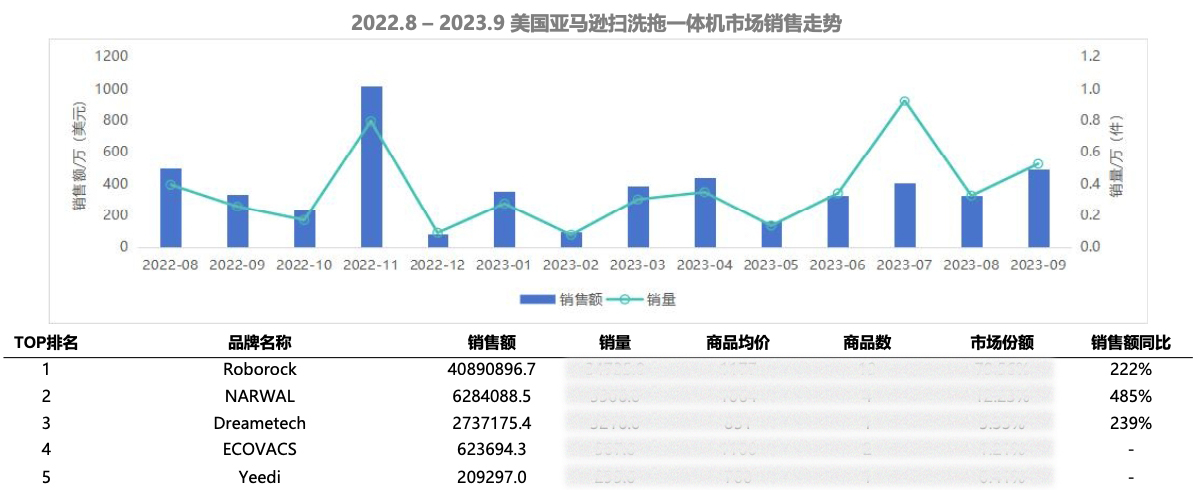
On the other hand, after several years of sweeping across developed countries in Europe and America, the robotic vacuum trend has finally reached Southeast Asia. According to Moojing Oversea data, from January to October this year, sales of robotic vacuums on Lazada Philippines exceeded $8.24 million, a year-over-year growth rate of over 790%. Whereas American-Asia's high-end product line is showing strong growth, the Southeast Asian market presents a different picture—products are mainly low-priced with an average of around $50.
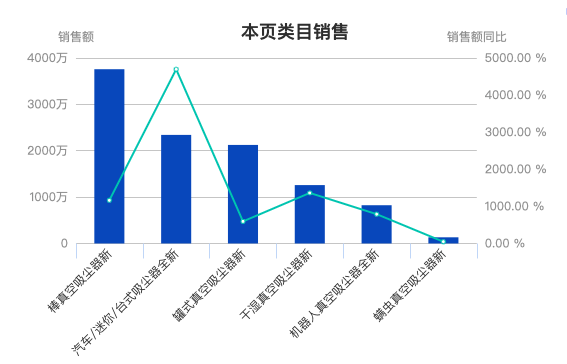
Currently, overseas brands cannot match the R&D efficiency of Chinese brands, such as iRobot's upgrade of the Roomba j7 to a sweep-and-mop integrated unit in 2022. Chinese brands can fully exploit their supply chain and product development advantages accumulated over many years domestically during their global expansion. They can assess local markets closely, fully consider the main scenarios and pain points users encounter when using robotic vacuums, and develop products that meet the consumption habits and user needs of overseas markets by focusing on cleaning ability, navigation and obstacle avoidance capabilities, battery life, and user experience. These differentiated product strategies can help win market growth.
Xiaomi's co-founder Lei Jun once put forward a concept called "tomorrow feature," believing that "from an era without smartphones to today's frequent use of smartphones, you can't go back. So products must have a 'tomorrow feature,' that once used, cannot be relinquished or lived without." Robotic vacuums are products with this "tomorrow feature," addressing people's high-frequency pain points.
There is still considerable room for growth in the robotic vacuum market, as many consumers lack a basic understanding of the products, necessitating the need for market education with ample time and patience. Amidst the intense competition in the domestic robotic vacuum market, expanding overseas may be a good choice for Chinese brands with strong product capabilities. However, understanding the local market and creating differentiated functions, and adopting product strategies tailored to the local conditions, will be essential for every brand.